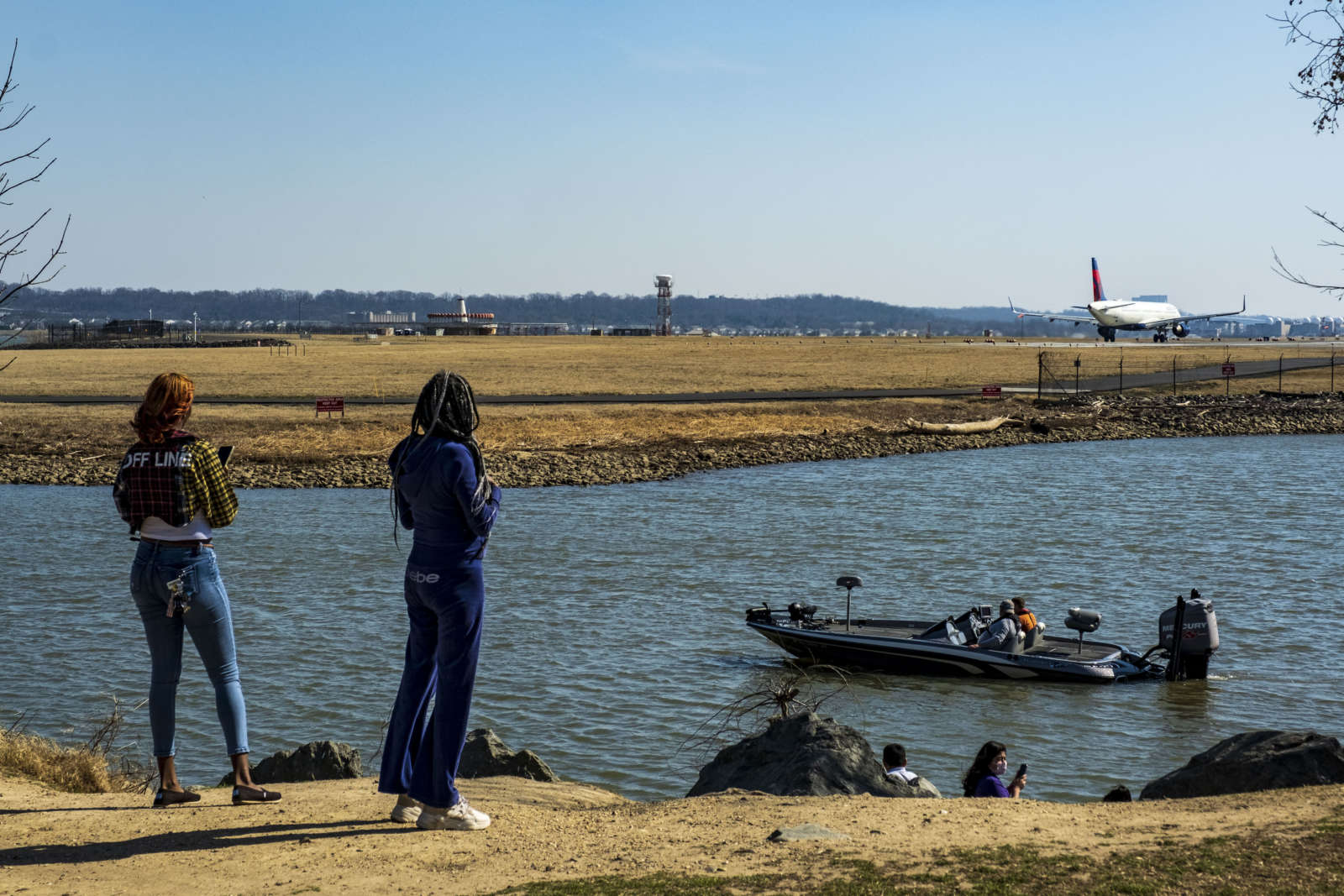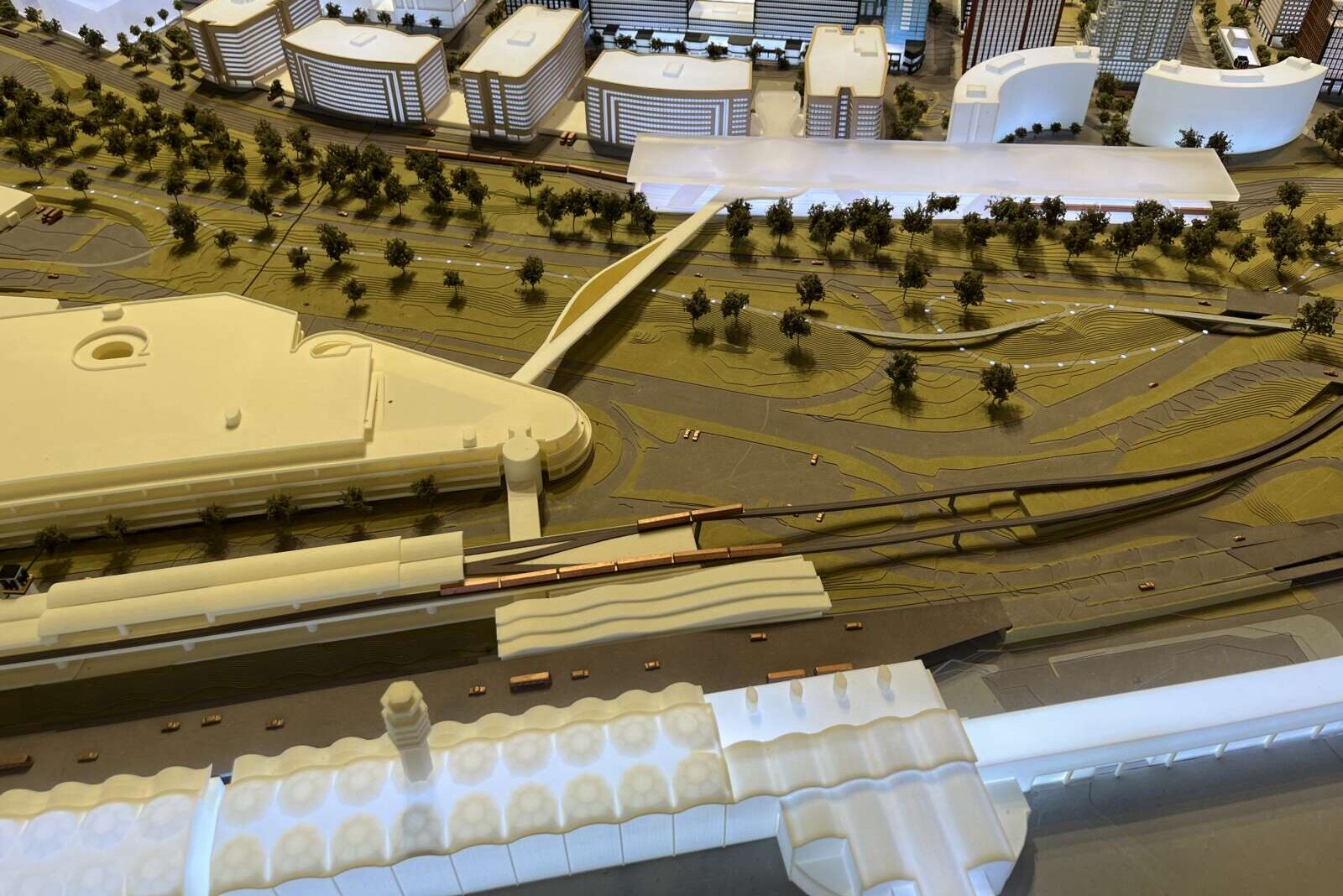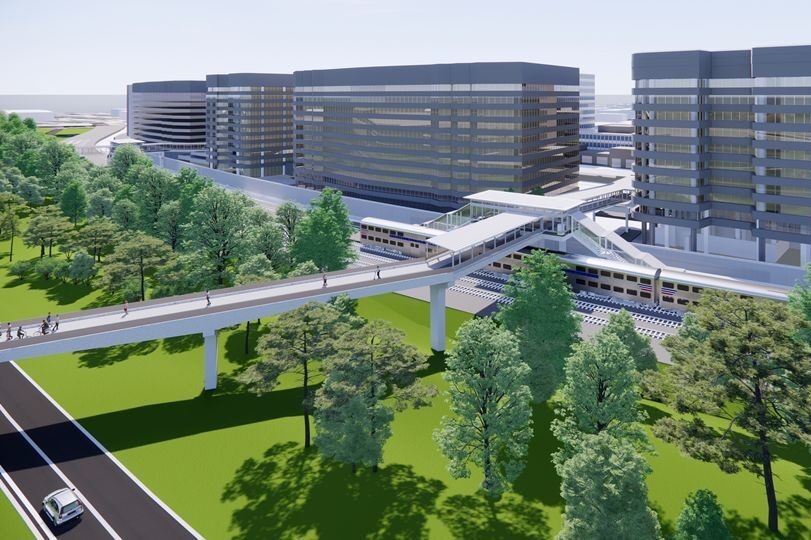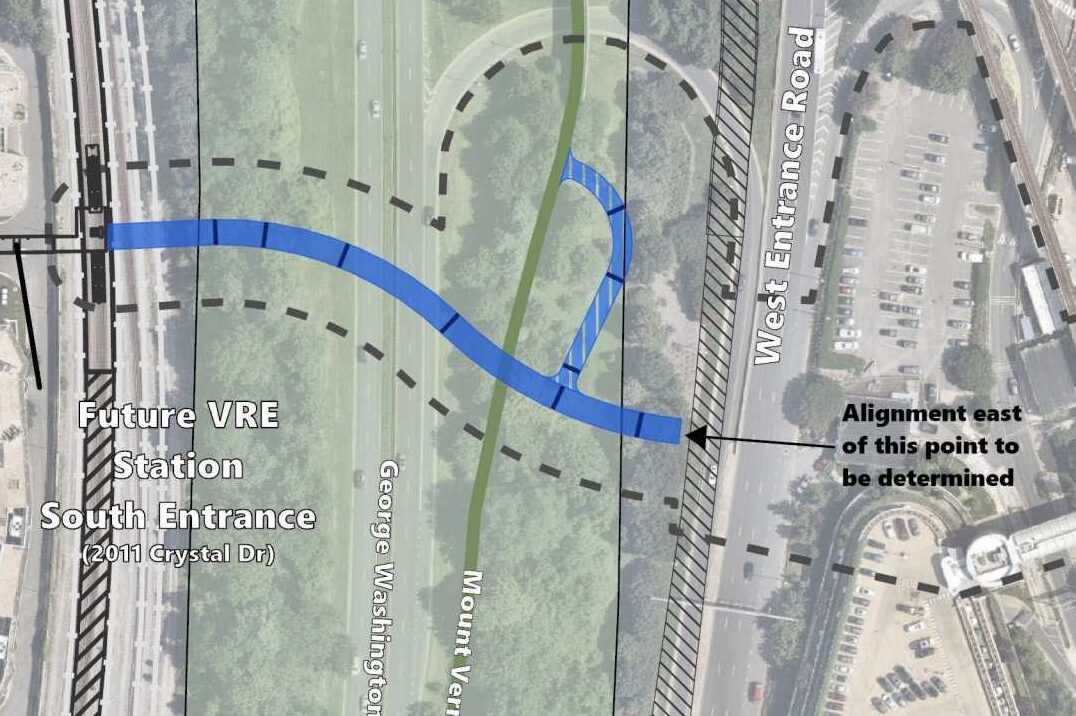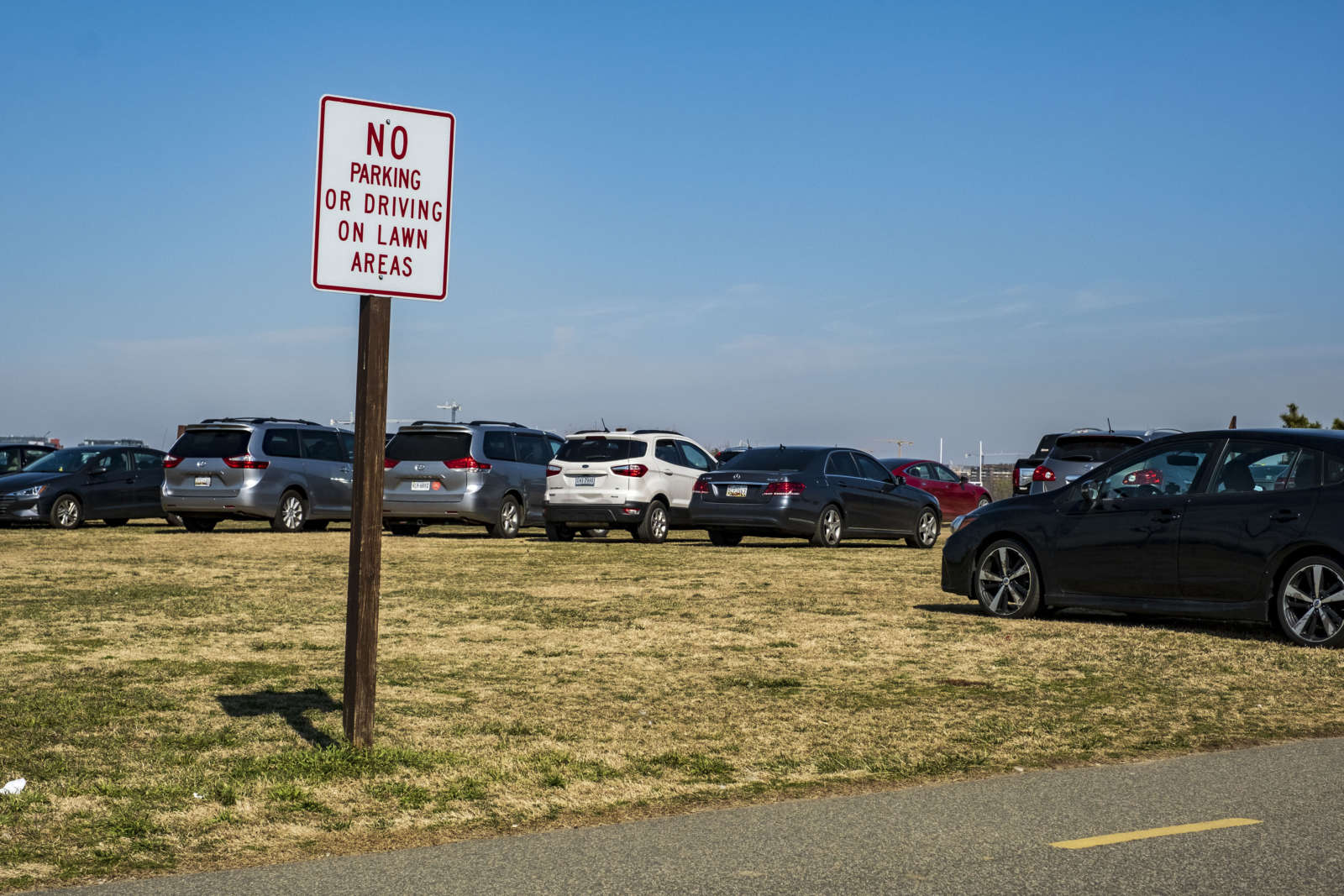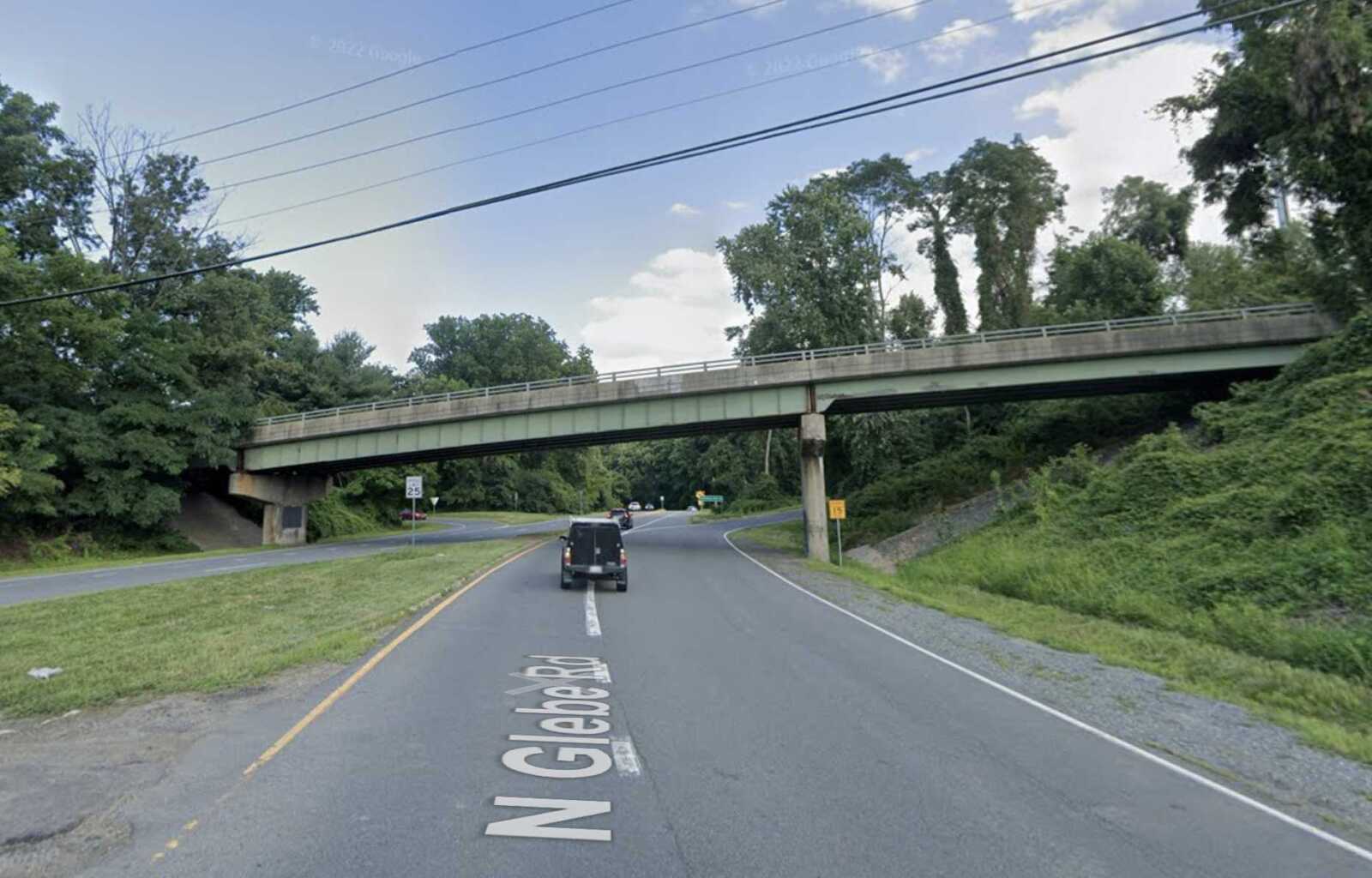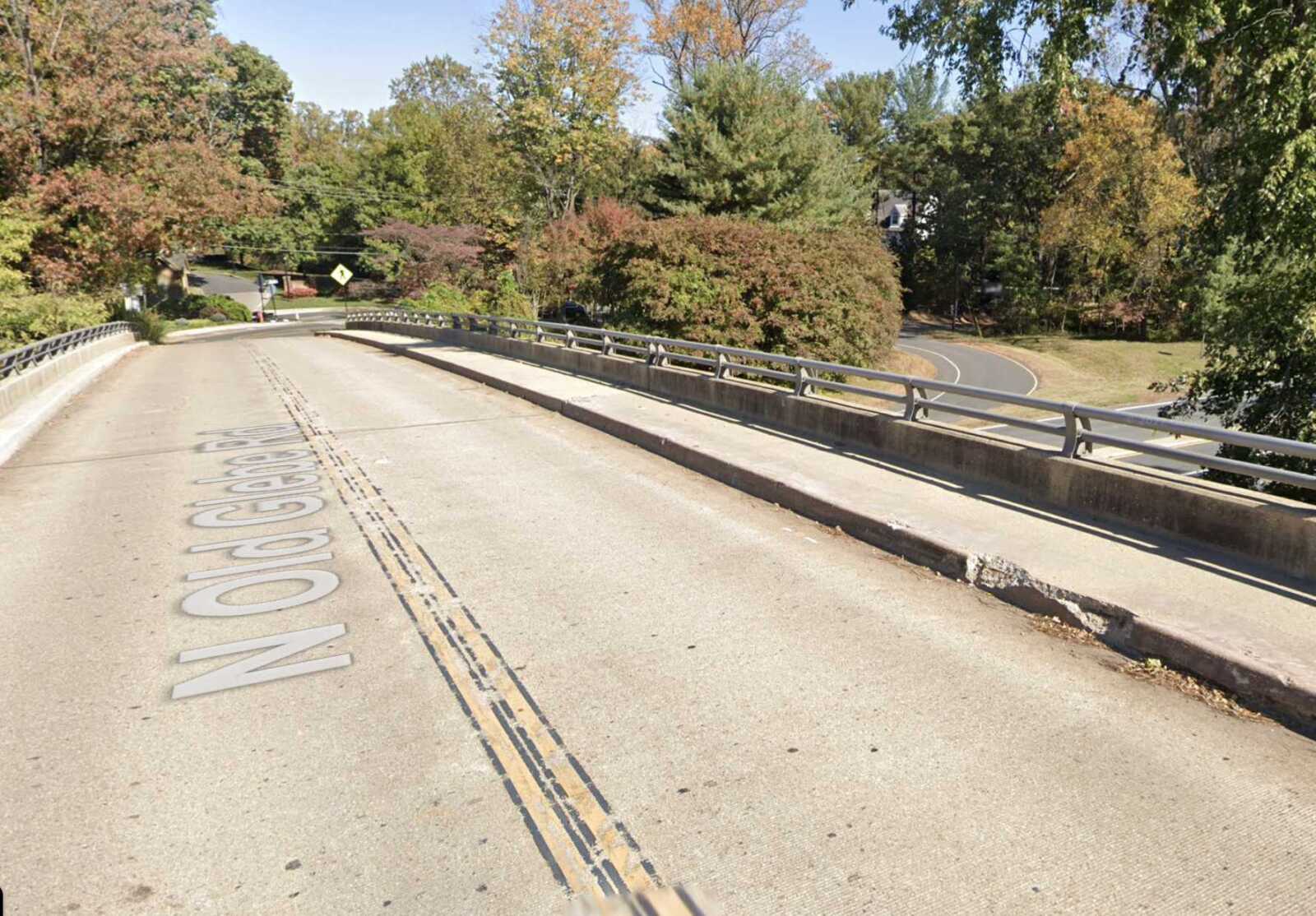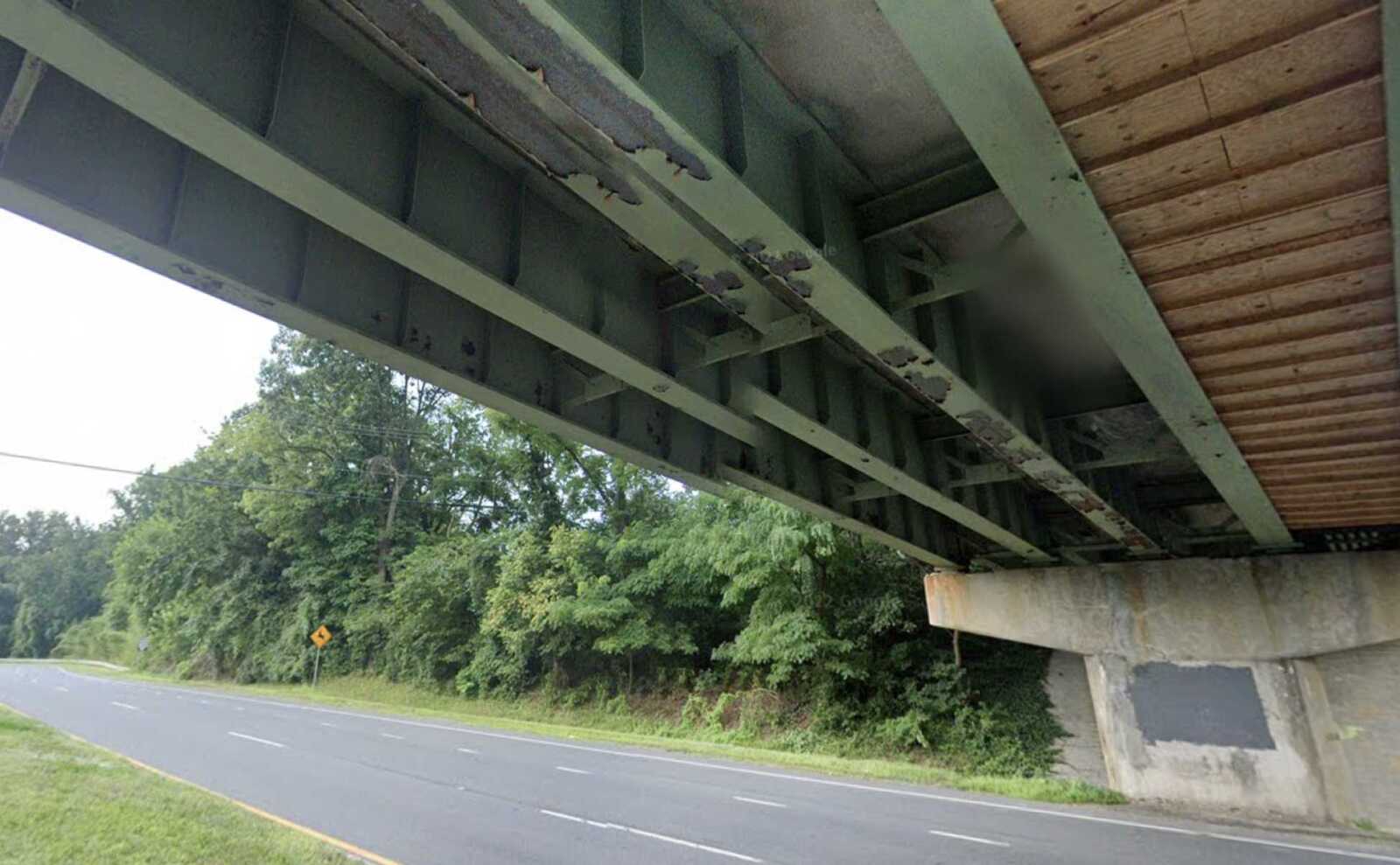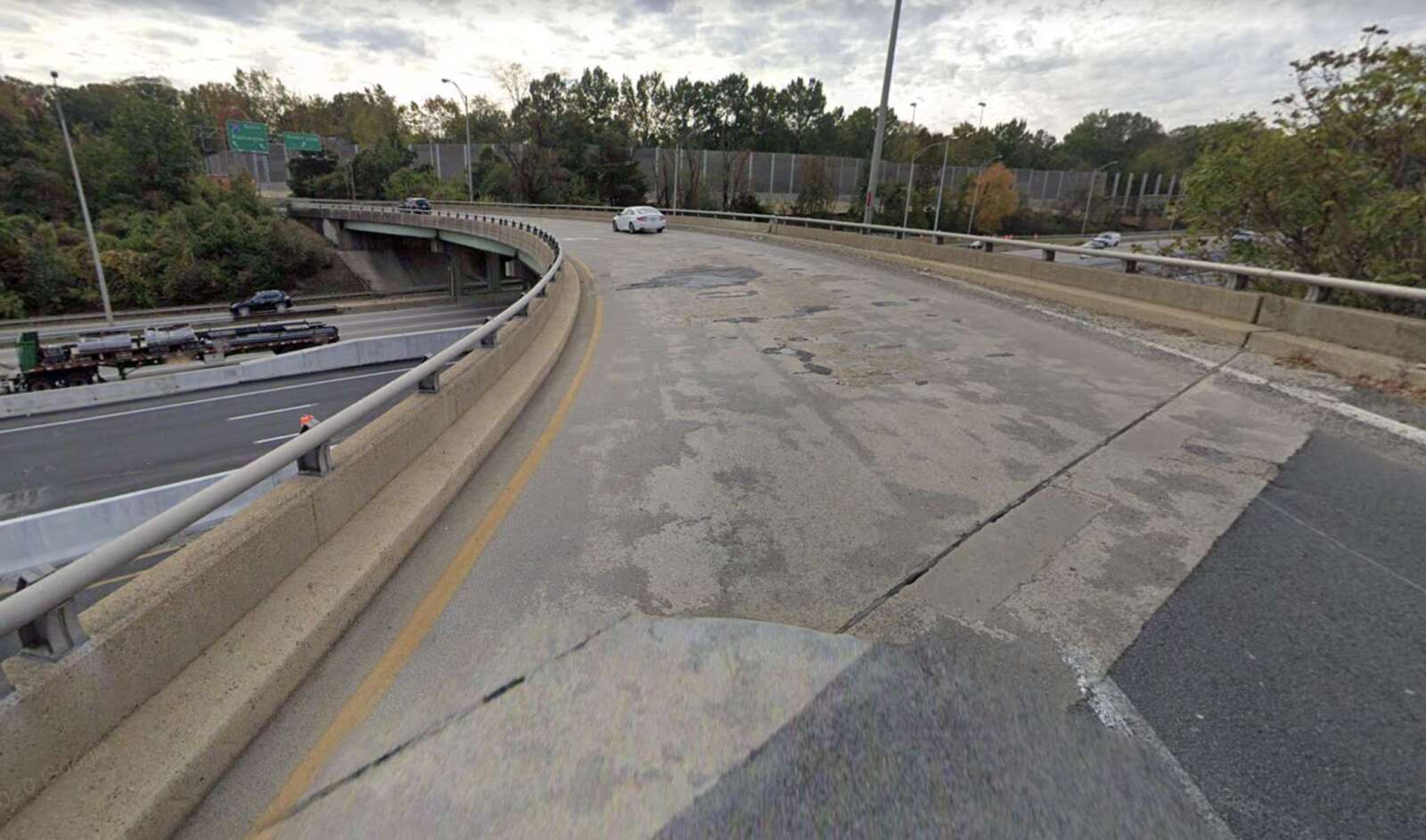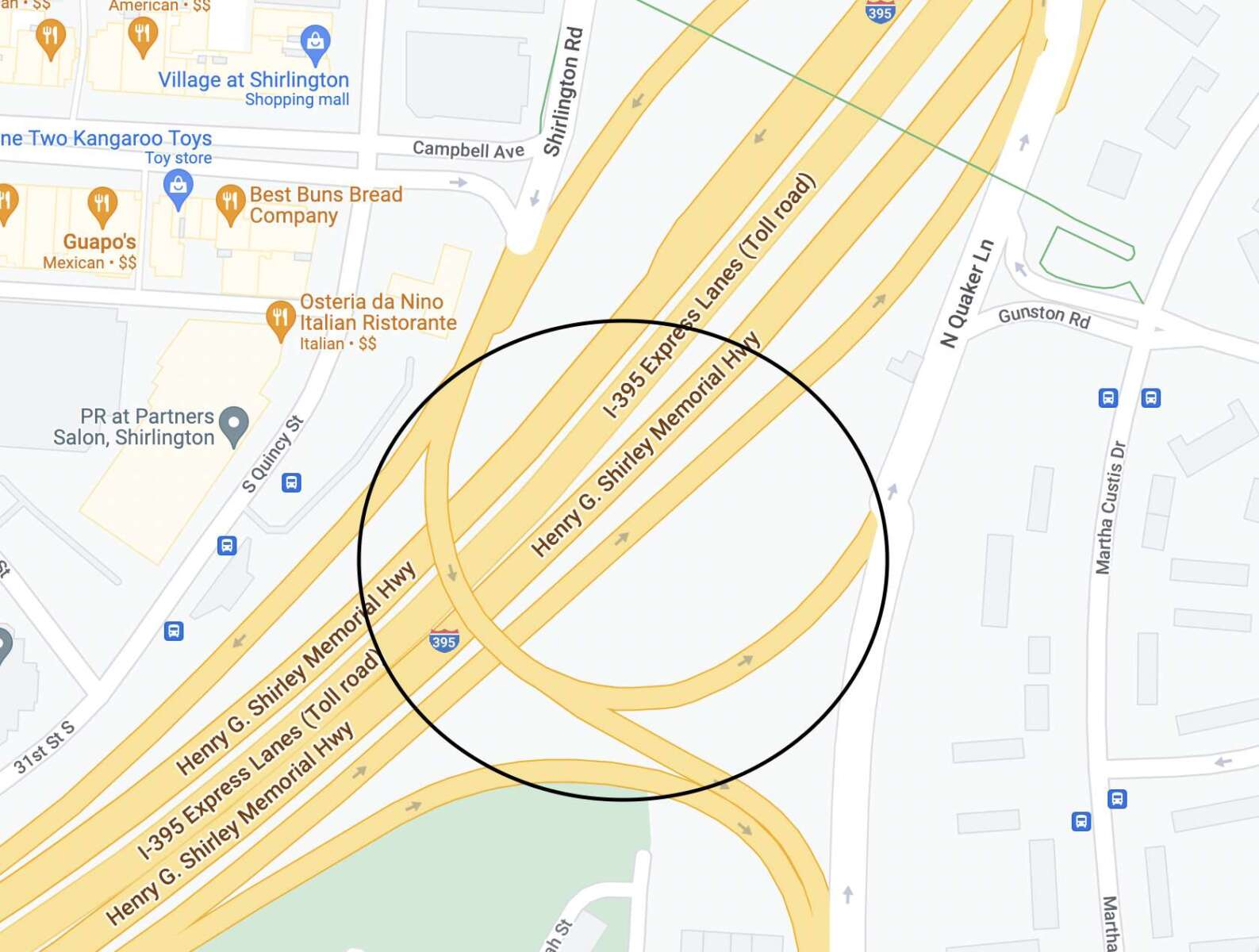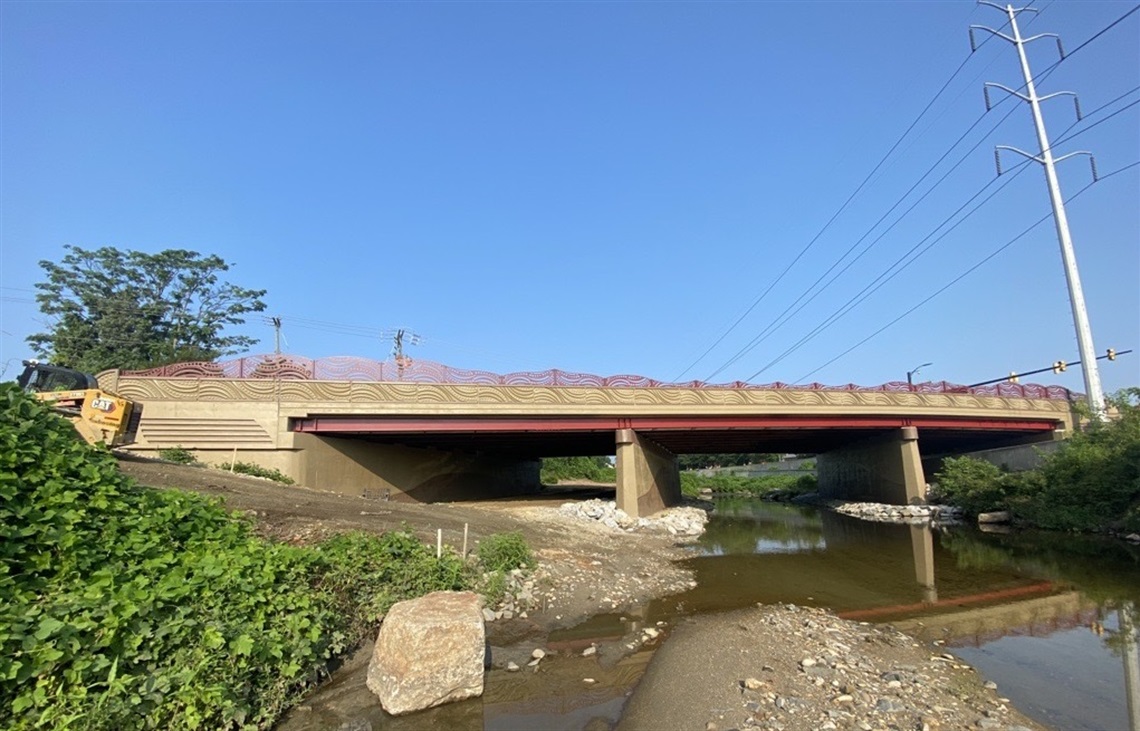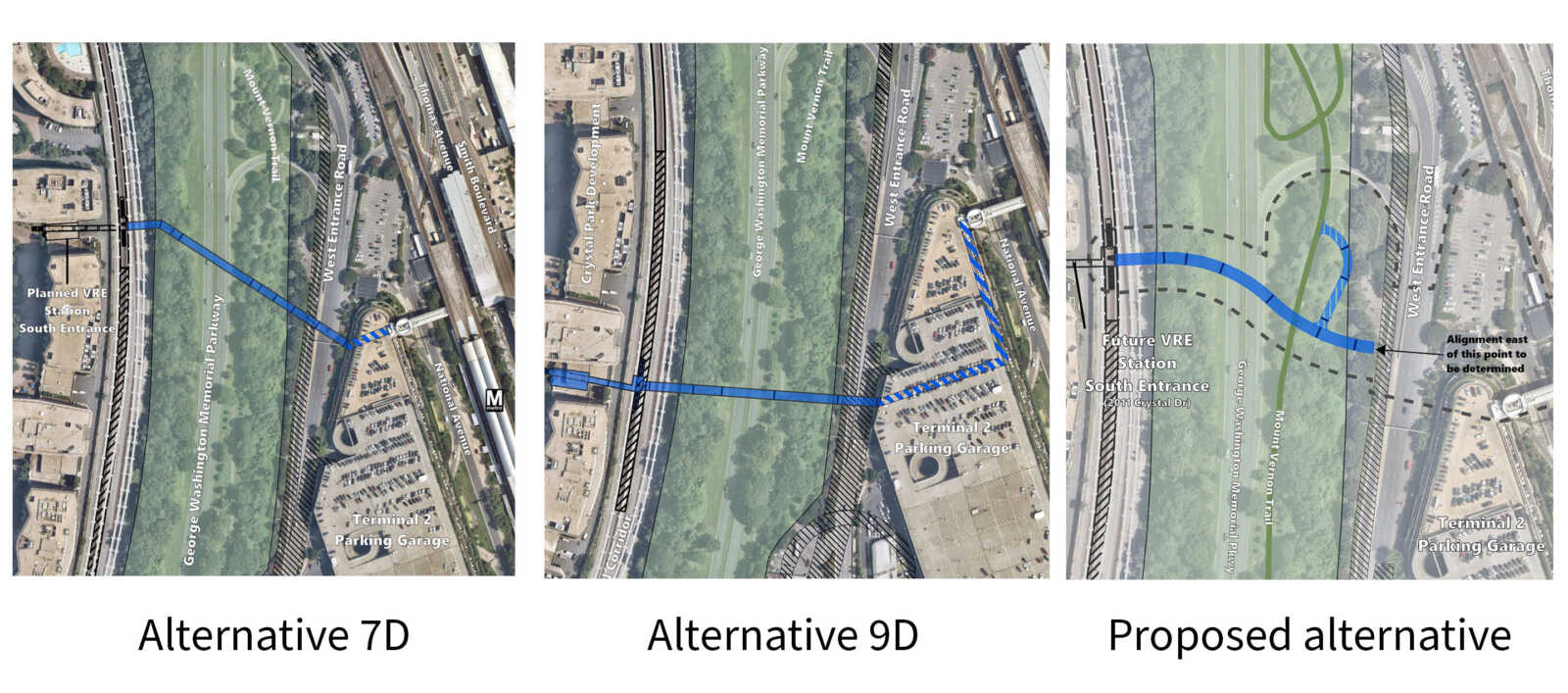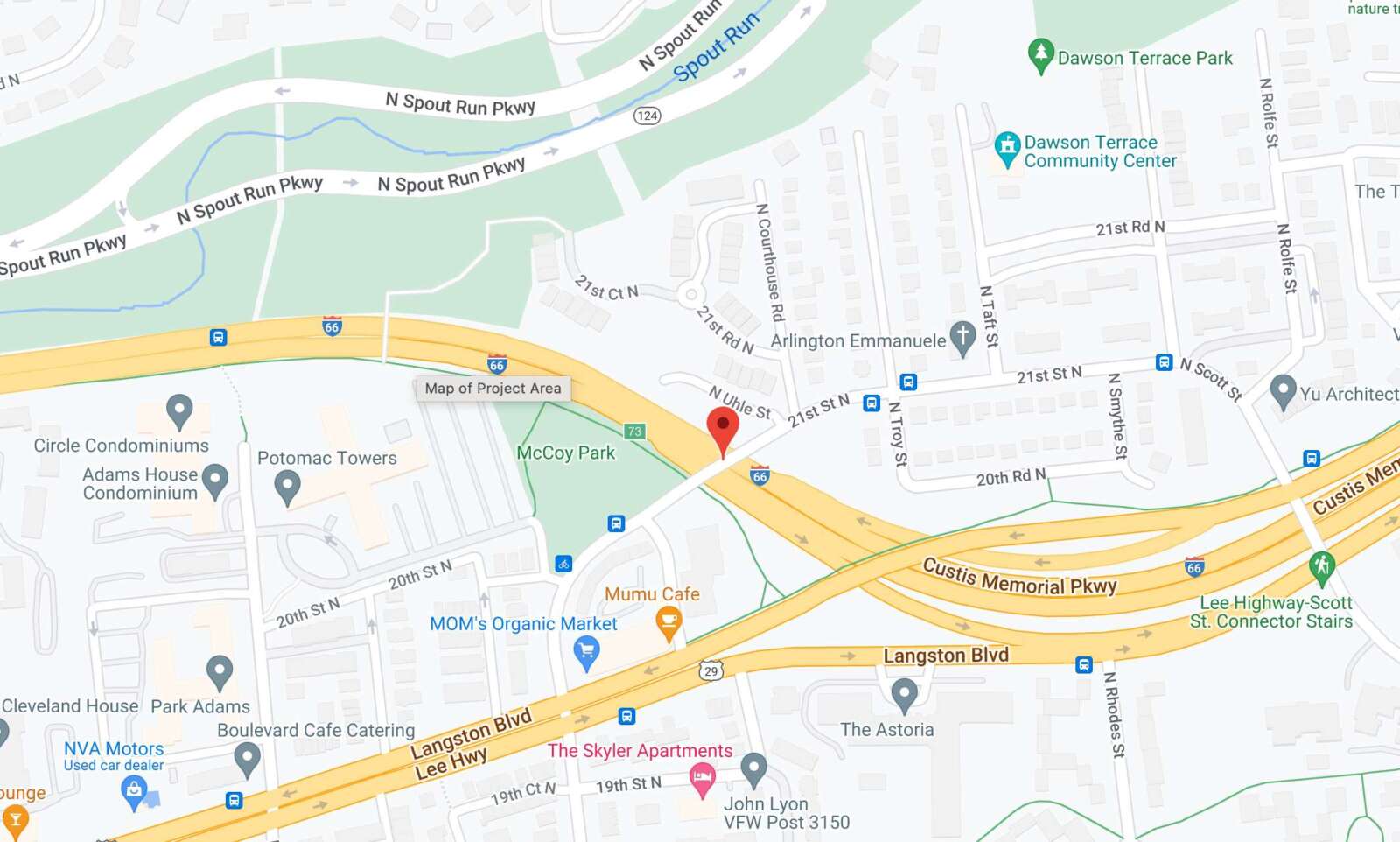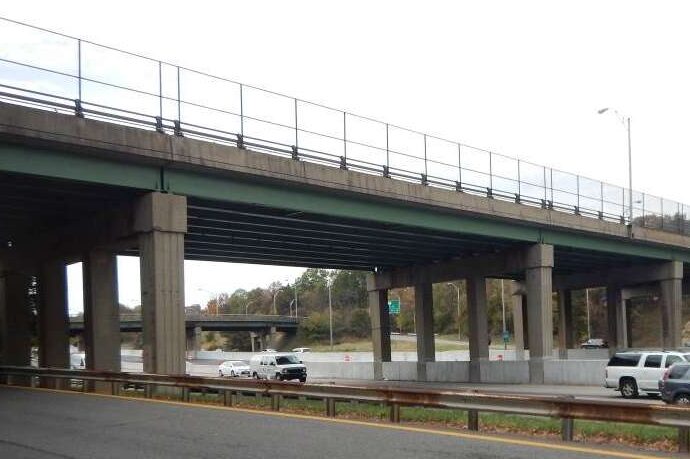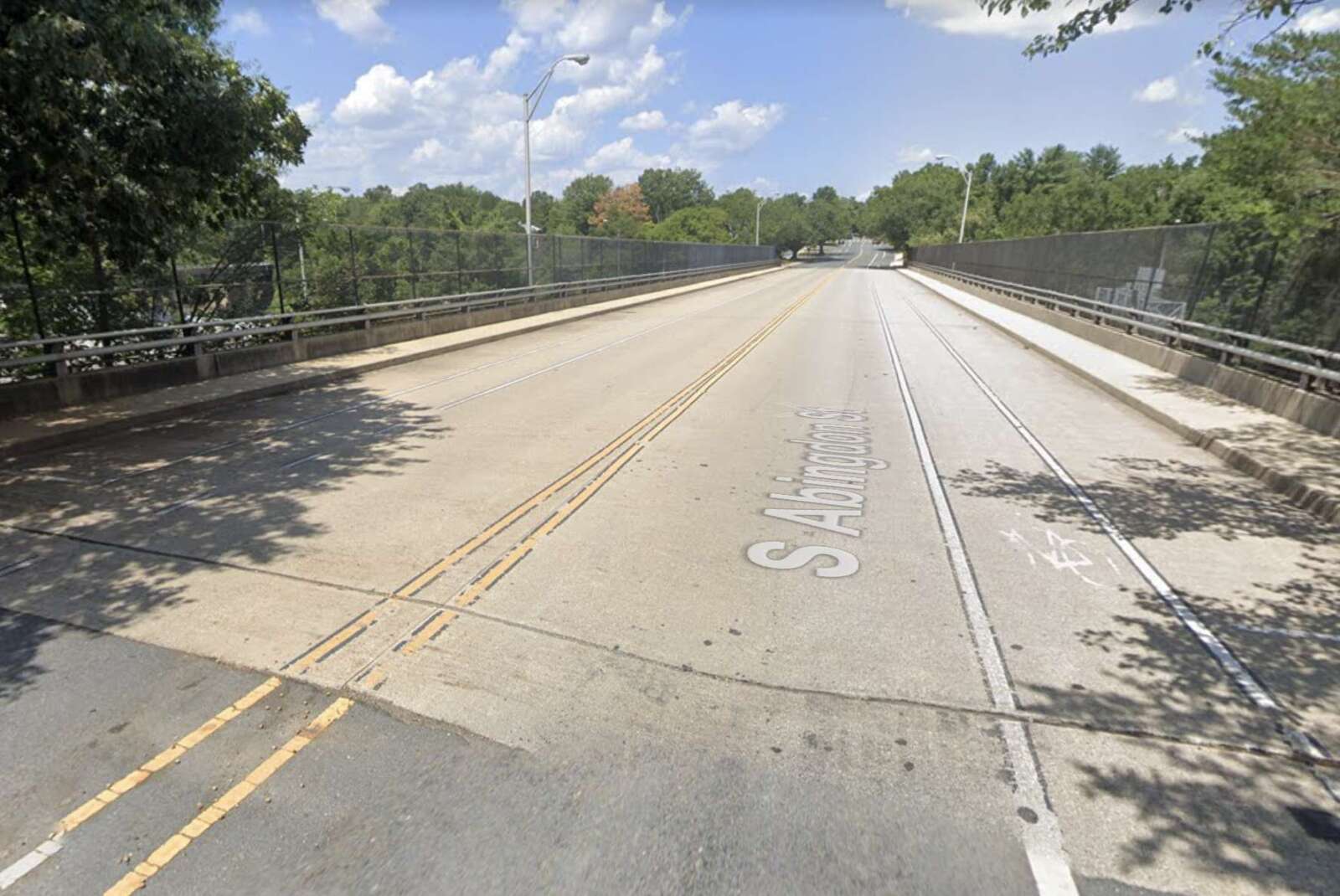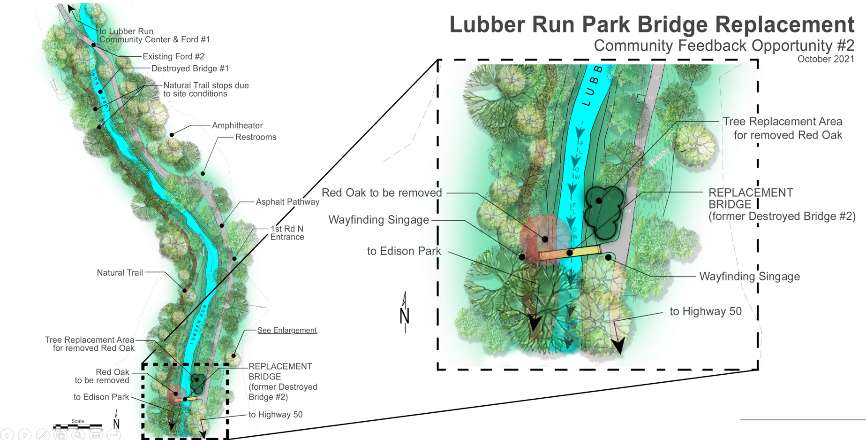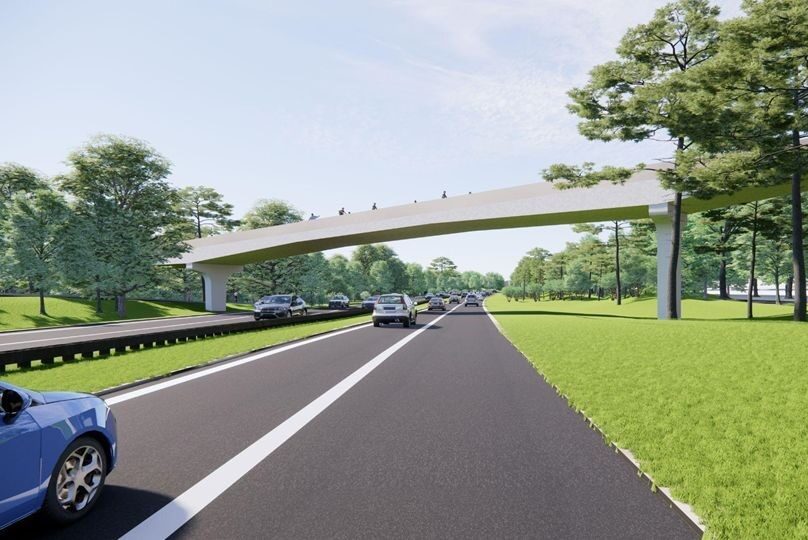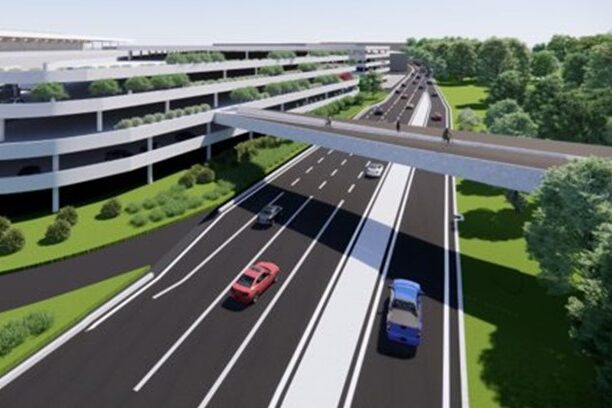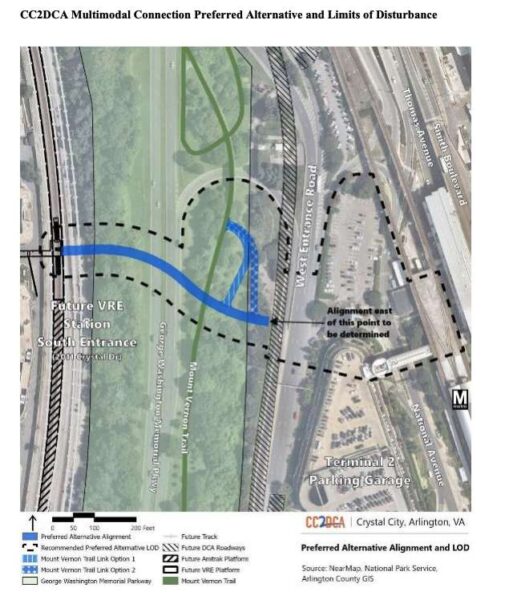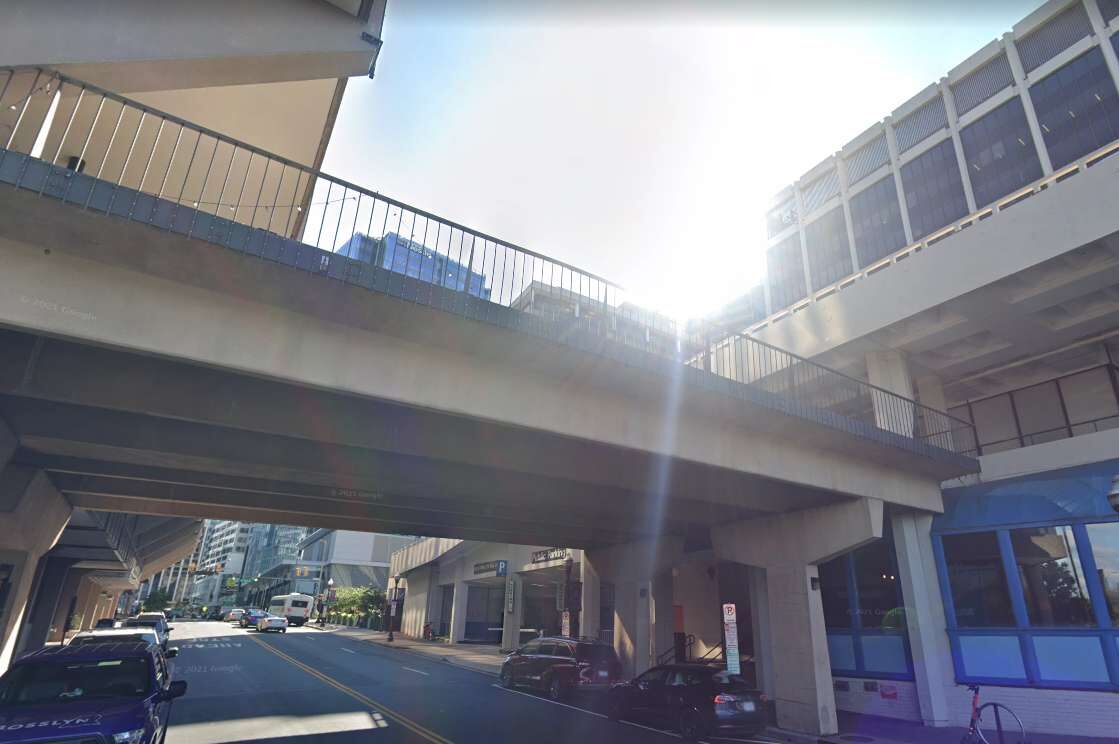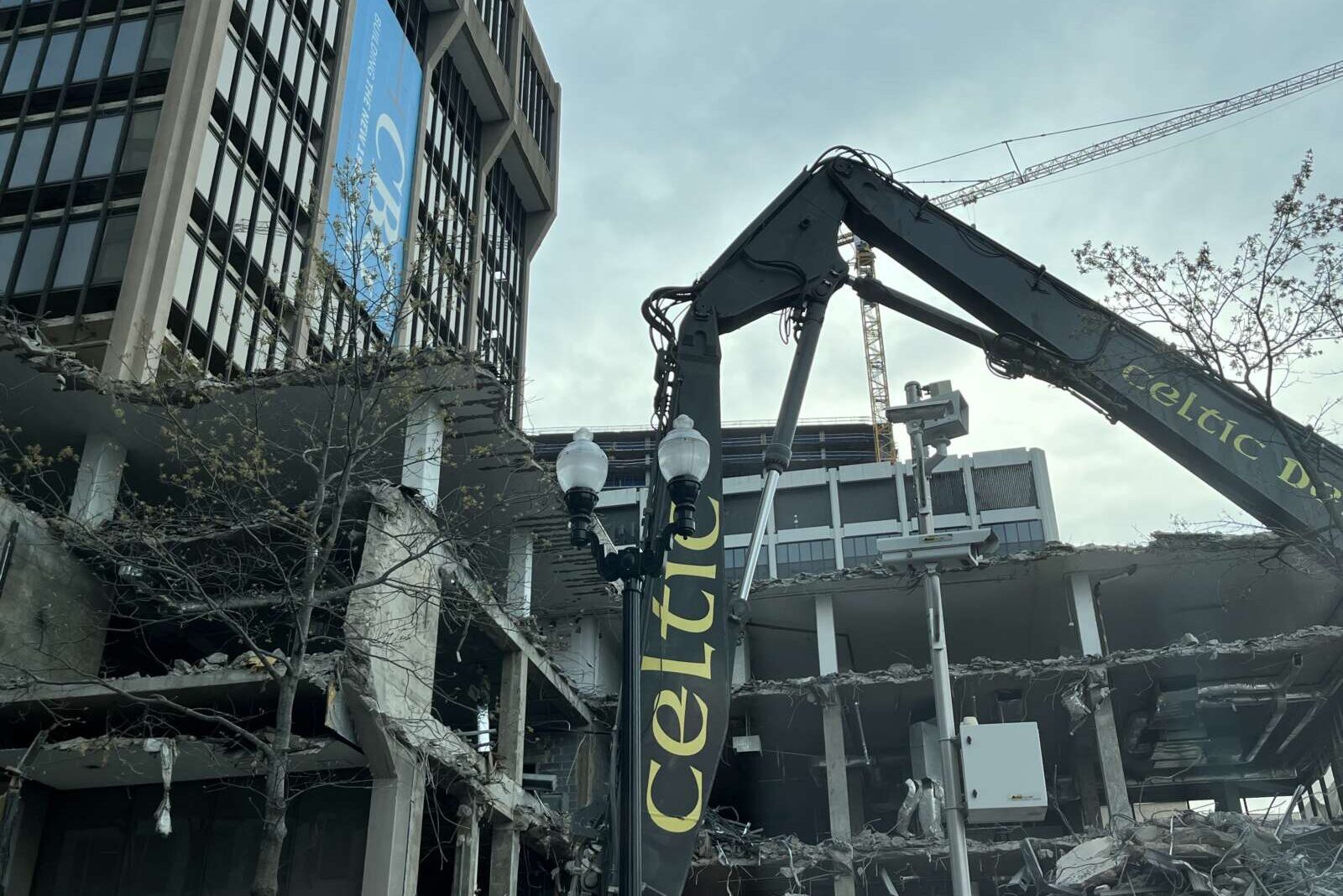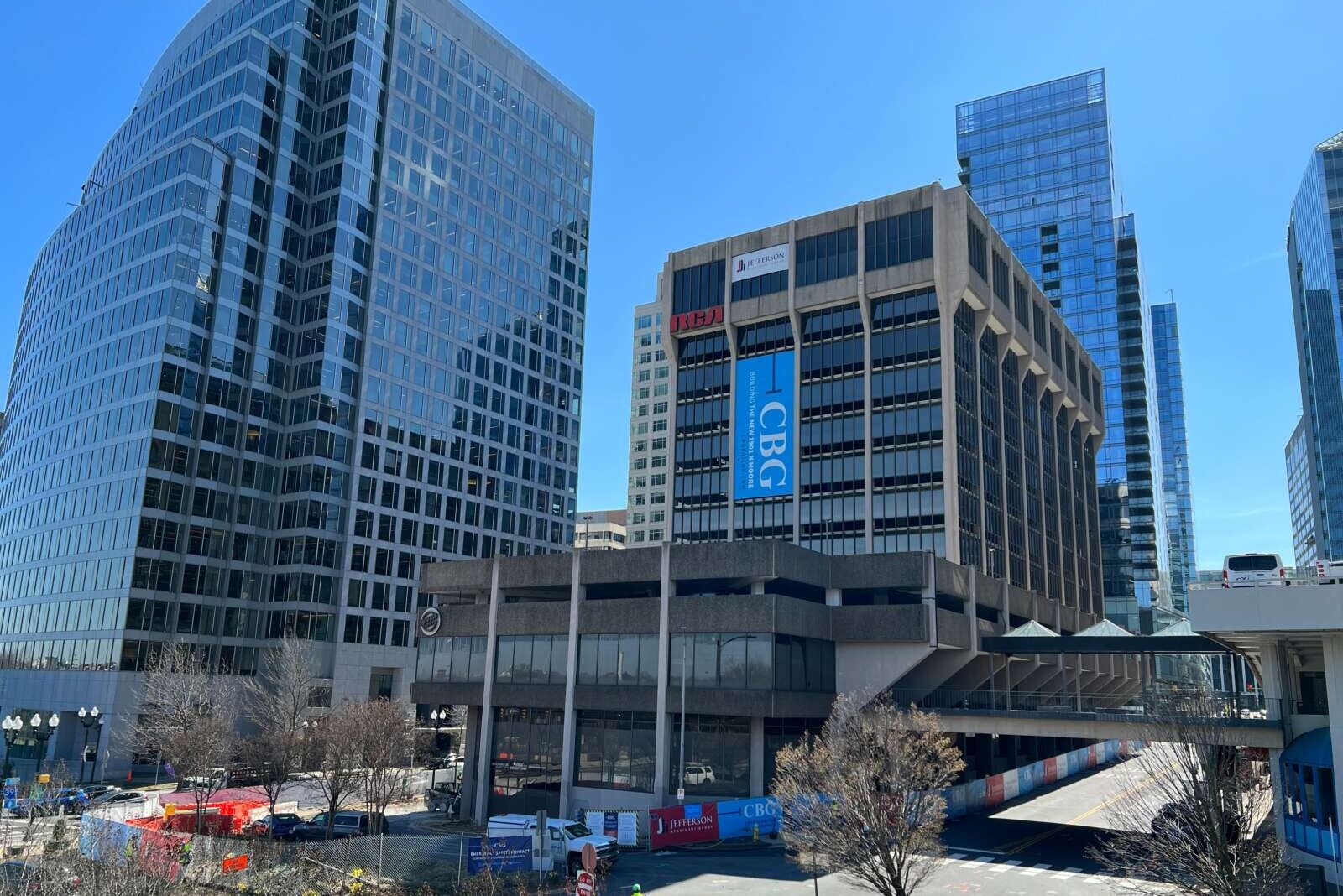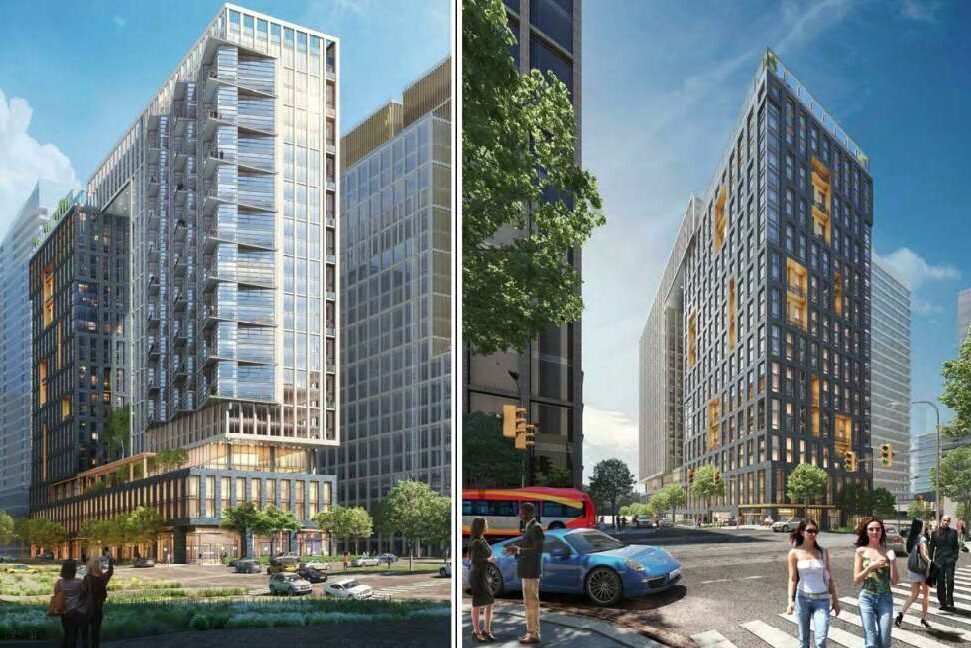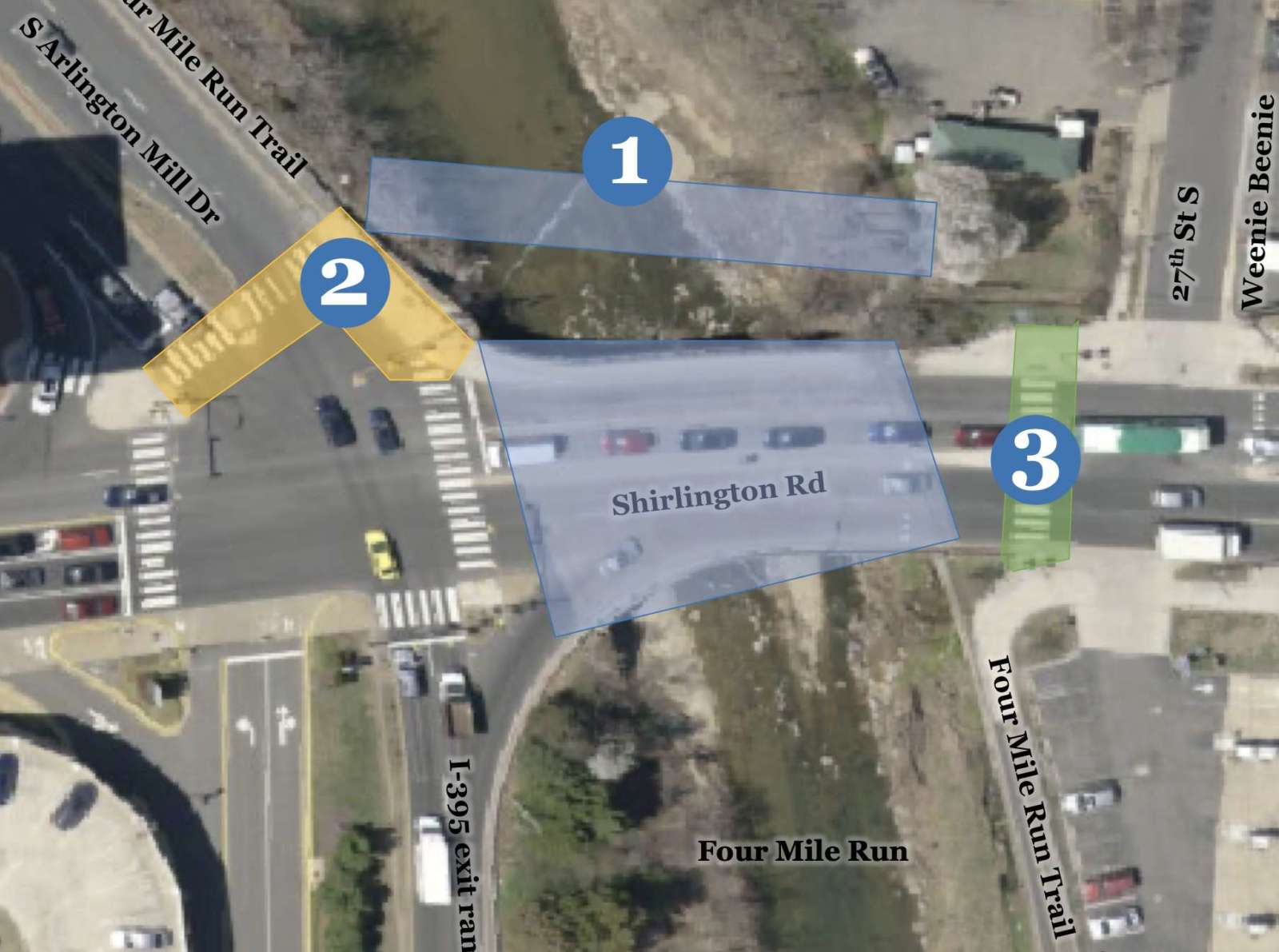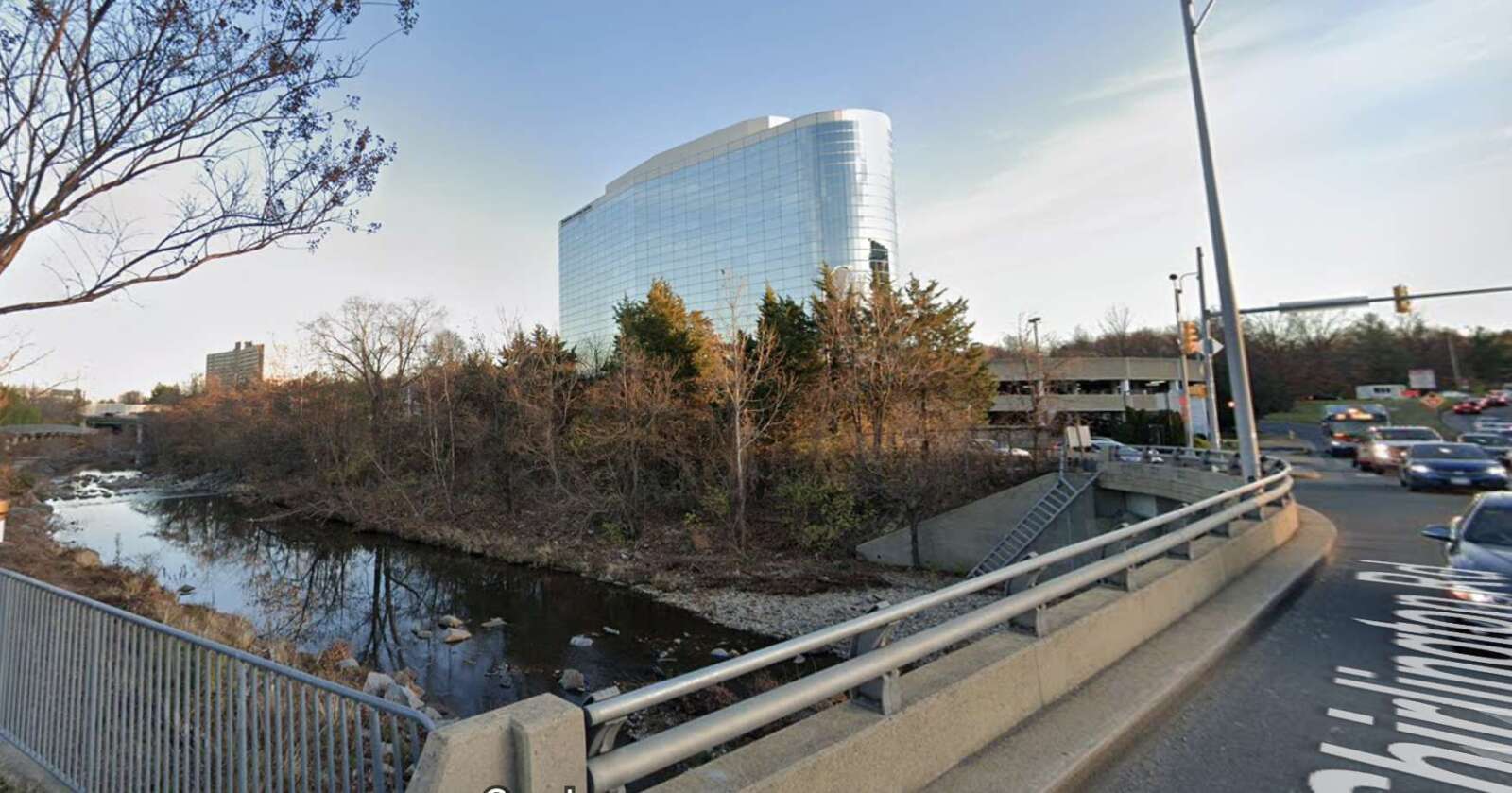Arlington County will be setting aside $1.6 million for improvement projects on national parkland in the crosshairs of a future pedestrian bridge between Crystal City and National Airport.
The long-discussed bridge, dubbed CC2DCA, is about to clear a major milestone: completion of a federally mandated review of its adverse impacts to the environment and historic properties.
While environmental effects were deemed minimal, several National Park Service-controlled historic resources were flagged for impacts, according to a county report, including the George Washington Memorial Parkway and the Mount Vernon Trail.
The parks service and the county have settled on three improvement projects to mitigate this predicted impact. Once a design contract for the project is awarded, the county will transfer money to NPS for the work. Funding will come from the Crystal City Tax Increment Financing fund, which pays for infrastructure improvements that revitalize Crystal City, Pentagon City and Potomac Yard.
The biggest chunk, $1 million, will go toward planning and implementing improvements at Gravelly Point, as this public area could see more users traveling to and from the CC2DCA bridge via the Mount Vernon Trail.
The site could see a new parking lot, a rehabilitated boat launch — complete with an accessible canoe and kayak launch — relocated public restrooms and improved aesthetics of public-use areas.
“The Gravelly Point site is the closest major Mount Vernon Trail hub to the project area; the new CC2DCA bridge is less than a mile from Gravelly Point,” it continued. “The site rehabilitation will benefit trail users by improving the public amenities and repair deteriorated infrastructure that is in danger of further deterioration with the additional usage generated by CC2DCA.”
Next, $500,000 will fund maintenance activities by the Friends of the Mount Vernon Trail over five years, including edging the trail, replacing boardwalk bridge components like decking, cutting back vegetation overgrowth, grinding out asphalt root heaves and power washing scum from bridge decks.
Lastly, $150,000 to fund planning work to add interpretive signage to the GW Parkway highlighting underrepresented stories from Abingdon Plantation and Arlington House.
These projects are outlined in an agreement between the county and NPS, which the Arlington County Board approved during its Saturday, Dec. 16 meeting.
This agreement also requires the county to give NPS opportunities to review and give input as CC2DCA designs take shape and holds Arlington to executing a plan to protect and restore vegetation along the GW Parkway. The impact on scenic views for drivers, as well as vegetation removal, is expected to be relatively minimal, with about 146 trees removed.
The Board also approved an agreement with the county, NPS, the Federal Highway Administration, the Virginia Dept. of Transportation and the Virginia Historic Preservation Officer. This agreement is one of the final steps in the federally mandated environmental assessment study.
Originally proposed in 2017, CC2DCA was one of the transportation projects identified after Amazon announced plans to build its second headquarters in Arlington.
The last four years have been spent on design work, public engagement and the environmental study. Arlington and VDOT reviewed 16 possible bridge alignments and whittled them down to one that was picked earlier this year.
“Throughout the NEPA study, there has been overwhelming support for a direct multimodal connection between Crystal City and DCA,” the county report said. “During each public engagement period, the vast majority of individuals surveyed indicated they would use a CC2DCA connection if constructed.”
If CC2DCA comes to fruition, construction is expected to begin in late 2027 and last for two years, working around separate plans from the Metropolitan Washington Airports Authority to redo roadways and add more parking, new car rental facility and office space at DCA.


